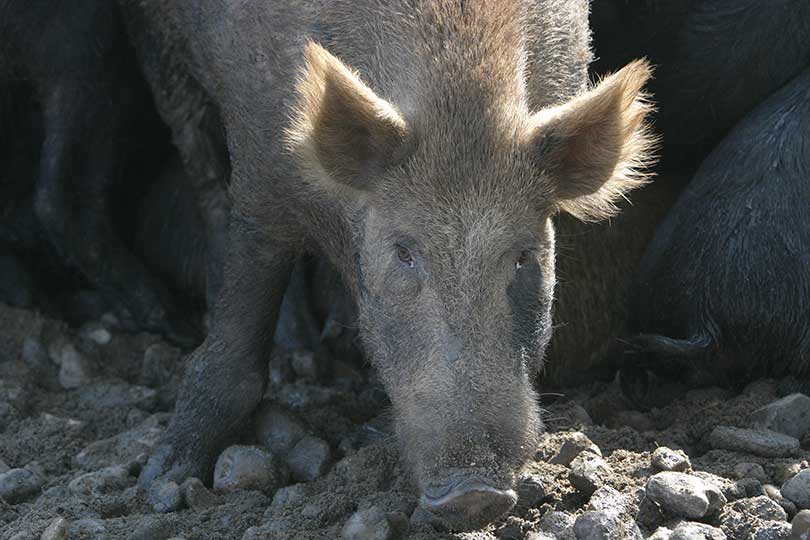No matter the water source, feral swine will muddy it. And destroy pastures, fields and other property along the way.
They have been increasing their population and geography, causing real damage on farms and ranches. That’s why the U.S. Department of Agriculture Animal and Plant Health Inspection Service (USDA APHIS) has set aside $20 million annually to address the damage caused by invasive feral hogs.
The program’s overall goal is to protect agriculture, natural resources, property, animal health and human health and safety by managing the damage caused by feral swine, and where possible, reducing or eliminating feral hog populations.
Feral swine, also referred to as wild pigs, are believed to be the culprits in contaminating surface water and spinach fields in California, which caused a foodborne illness outbreak, according to USDA.
They can also wreak havoc on conservation efforts.
“In many watersheds, feral swine damage to water quality, wetlands and riparian habitats also threatens native wildlife, including threatened and endangered species, which depend on these ecosystems,” APHIS wildlife technician Jeanine Neskey said.
These porcine pests can wreak havoc on livestock and pets, too.
“Livestock and pets may become ill by drinking water from streams or ponds contaminated by feral swine,” she said. “Humans are at risk when swimming or wading in contaminated water, from eating crops in which feral swine have rooted or defecated or if feral swine have contaminated the irrigation source for the crops,” she said.
Click here for more information on what APHIS is doing to manage the damage.

